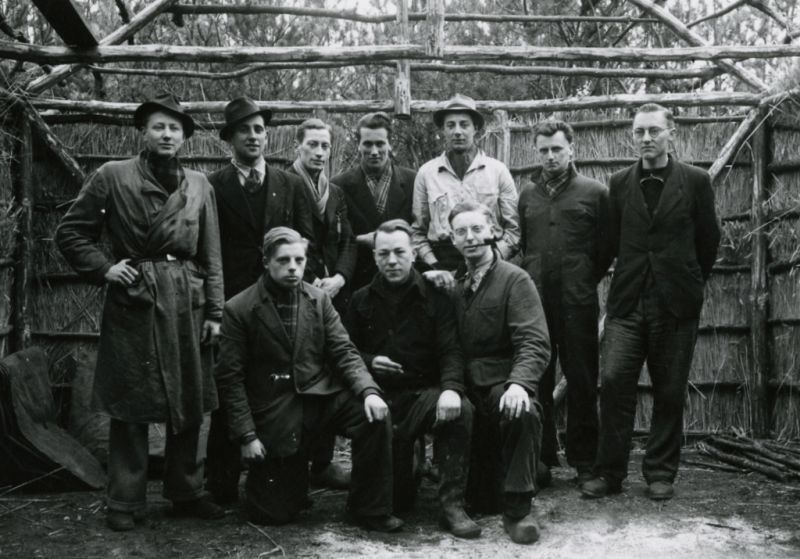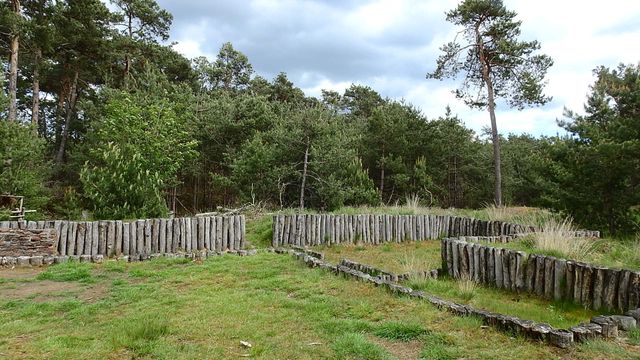Hiding camp in the hamlet of Moorsel in Lierop
In the Moorsel area in Lierop, the former Dennenlust hiding camp has been reconstructed. Members of the local history circle De Vonder and Astenaar Gerard Geboers, author of the book 'They lived in a forest for a year – August 1, 1943-September 21, 1944', worked for weeks on it.
It is quiet in the forest in the Moorsel area. The forest does not seem to differ from any other forest. Yet there is one big difference: seventy years ago more than thirty people in hiding lived here.
The Dennenlust hiding camp was built in 1943 to house students from The Hague who were wanted by Germans during the Second World War. According to Geboers, the place where the hiding camp was located, he and seven members of the local history circle De Vonder set to work.
The variou…
In the Moorsel area in Lierop, the former Dennenlust hiding camp has been reconstructed. Members of the local history circle De Vonder and Astenaar Gerard Geboers, author of the book 'They lived in a forest for a year – August 1, 1943-September 21, 1944', worked for weeks on it.
It is quiet in the forest in the Moorsel area. The forest does not seem to differ from any other forest. Yet there is one big difference: seventy years ago more than thirty people in hiding lived here.
The Dennenlust hiding camp was built in 1943 to house students from The Hague who were wanted by Germans during the Second World War. According to Geboers, the place where the hiding camp was located, he and seven members of the local history circle De Vonder set to work.
The various rooms of the house near the former hiding camp are marked with wooden posts. The kitchen is immediately recognizable. "Here, by the stone oven, was the kitchen," says Geboers, who wrote a book about the camp. "The lower part of it is original. Below it is a concrete floor that was found during the excavation.
That is my pride." Jan Been, who was hiding there at the time, gave Geboers a self-made floor plan. The house was copied on the basis of this. There were two bedrooms, one below and one on the first floor. Each room contained eight double bedrooms. When there were finally at least forty people in hiding in the house, it became quite cramped. They even worked with sleep schedules." The former chapel, the prison, the jogging track, the sports field, the watchtowers and even the rabbit hutch are also marked in the area. A forest fire, not long after the liberation, wiped out the original. "The pitches are marked with wood and sand, because we wanted to maintain the most natural look possible in the forest," says Geboers.
Recreational area;
It is special that the story now takes on more color. That was the purpose of the reconstruction: to increase the amenity value." The project was set up by Rinus Manders of the IVN and the local history circle De Vonder. The idea was subsequently received positively by the municipality of Someren. "Moorsel should be a recreational area. become. A tourist route for people in hiding had already been devised earlier. Reconstructing the camp is in line with that," says Geboers.
The Berkers family farm in Lierop, now Boscafe Pastoorke van Moorsel, also played an important role. "The people in hiding went here to get their clean laundry, bread and drink," says Geboers. "Those things were laid out in the chicken coop and collected by the people in hiding at night."
Found objects;
Before the camp was rebuilt, archaeological research was carried out in the area near the hiding camp by the local history circle. Among other things, a cross of a rosary, a wedding ring and six bullets from 1938 to 1942 were found.



